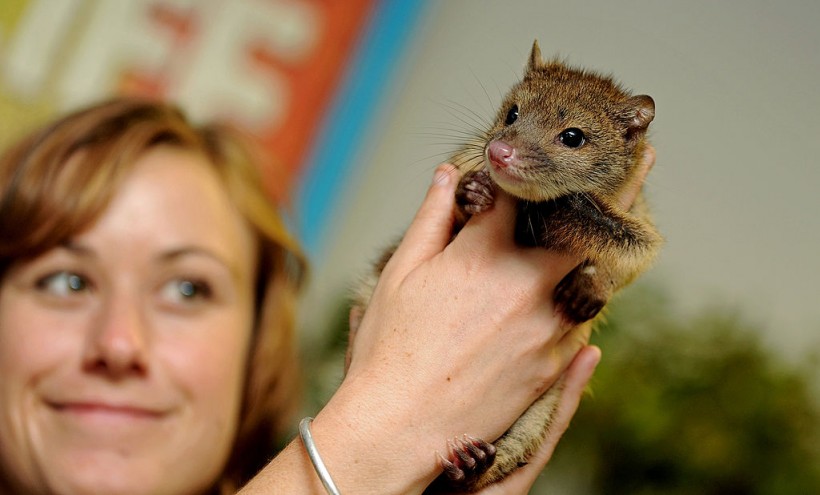Quolls, historically identified as native cats, are carnivorous marsupials from which four species are native to Australia, including the spotted-tailed quoll, and the eastern, northern, and western quoll.
A Phys.org report specified that quoll populations in Australia have been decreasing for over 100 years. The remaining eastern quoll population of Tasmania, for instance, fell more than half in the decade to 2009, and numbers have not recovered since.
Quolls are famous for their scavenging. However, researchers wanted to discover more about their "scavenging of human corpses." They hoped, too, that this would yield further understandings into an animal's diet, not to mention its feeding behavior.
ALSO READ: Nonnative Birds Take Charge in Oahu Seed Dispersal

A mammal keeper holds up a baby spotted-tail quoll at WILD LIFE Sydney.
'Gnawed' Away by Quolls
As indicated in a similar Verified News Explorer Channel report, in the late 1870s, the body of Sargeant Michael Kennedy "lay in the bush in Victoria's Wombat Ranges." Although the bush would add its gruesome ending, he was shot by a notorious gang called Ned Kelly.
The man who later stumbled across the body of Kennedy said the man's one ear "was gone," and he imagined it had been "gnawed away by quolls." he added, the body was very much decomposed.
This particular occurrence is not isolated. According to Adjunct Fellow David Eric Peacock from the University of Adelaide, his recent research published in Australian Mammology discovered 111 accounts from 1831 to 1916 where the scavenging of a corpse was partly attributed or wholly to quolls.
Scavenging Human Corpse
In a modern context, it may appear a huge leap to attribute a lot of corpse disfigurements to quolls. And certainly, correlation doe not even out causation.
However, during the period, quolls were considered a major problem. They were recorded to have invaded homes and other buildings, and someone's bed in one report from South Australia.
During the second half of the 1850s in South Australia, more than 500 quolls were killed in just one day after animals reportedly knawed on stock whips and boots.
More so, quolls were, and have stayed abundant in a few portions of Tasmania, threatening animals including rabbits, poultry, captive birds, and chickens. Therefore, in this context, assuming a quoll was accountable for scavenging, a human corpse was just natural.
Hungriest in Winter
As specified in a report from The Conversation, where this was first reported, during the 1800s and early 1900s, quolls existed throughout Australia. However, the accounts Peacock uncovered were limited to Tasmania, not to mention a wide coastal-inland band from Queensland and NSW to just east of the border between South Australia and Victoria border.
Did you know that quolls showed a preference for eating certain parts of the human face? 🤔
In a new research, @UniofAdelaide's David Peacock uncovers corpse disfigurement accounts after 1900 – to understand quoll populations and diets. https://t.co/thWKRT74vj— The Conversation - Australia + New Zealand (@ConversationEDU) March 23, 2022
Such areas had substantial human populations, and newspapers to report the researchers' observations, which may explain the pattern. However, at that time, the easter quoll reportedly reached plague proportions in some areas and may have been desperate for food.
Approximately 85 percent of the reported human victims of quoll scavenging were males. This is aligned with attitudes during the 19th and early centuries when the outdoors was reported to be an overwhelmingly male domain.
Essentially, quolls are most abundant in late spring and summer. Nonetheless, 41 percent of human scavenging accounts were reported in winter and just 16 percent in both summer and spring.
This depicts that probably, quolls are hungriest in winter, as one might expect. However, it reflects the challenge of human survival during that time.
Related information about Australian quolls is shown on CuriosityShow's YouTube video below:
RELATED ARTICLE: Marmots Use Own Language to Communicate With Their Tribe
Check out more news and information on Animals in Science Times.














